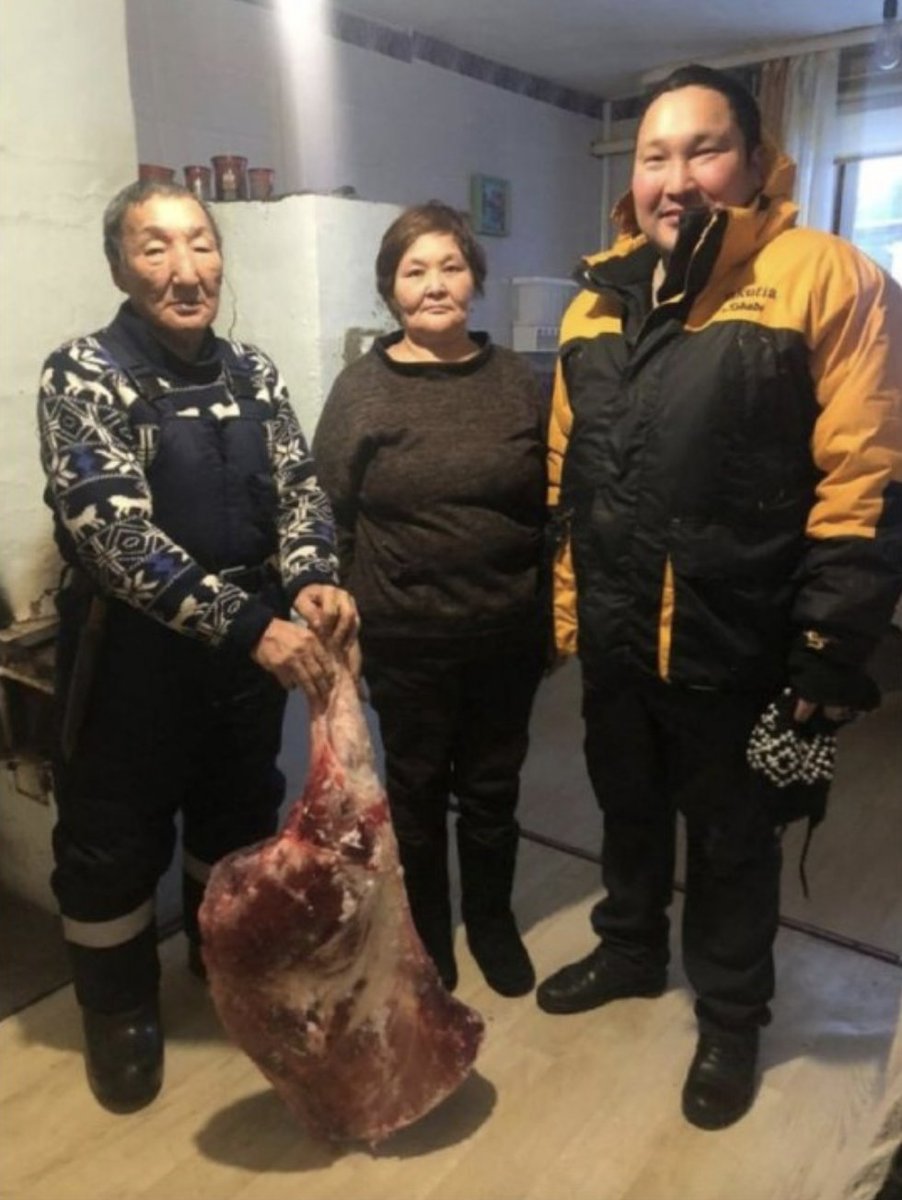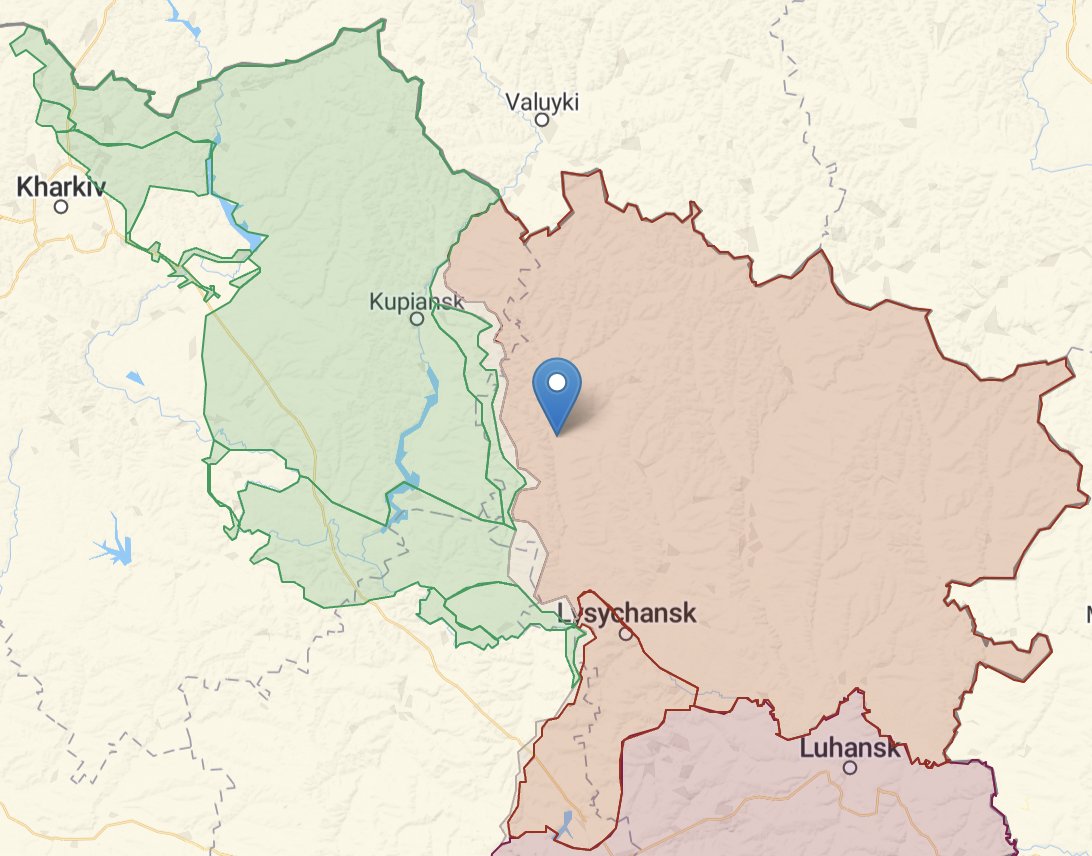
1/ Russia's regions lack money to pay mobilised soldiers, leading to the mobilised and their families being paid with potatoes, fish, coal, firewood, deer carcasses or not getting any payment at all. Many are now complaining: "The Motherland has rotted away," says one wife. ⬇️ 

2/ A large portion of the cost of mobilisation is being paid by Russia's regions. Many are paying a one-time allowance to the men and their families to enable them to cover the cost of the men's absence. The Russian federal budget covers the war's direct costs.
3/ On 19 October 2022, Putin ordered the regions to give a 195,000 ruble ($3,220) payment to the mobilised. Many regions were already providing support payments, ranging from from 50,000 rubles ($825) in the Kostroma region to 300,000 ($5,000) in the Sakhalin region.
4/ An investigation by the independent Russian publication "Important Stories" (iStories) has found that 26 regions have allocated a total of 11 billion rubles ($181.6m) for this. However, the amount allocated is not enough to cover all the men who were planned to be mobilised.
5/ iStories suggests that this either means that the mobilisation did not recruit as many as originally planned, or the authorities are consciously underpaying the mobilised. There is some evidence from other reports that the second possibility may be happening.
6/ "For example," iStories reports, "the Kaluga region pays 100,000 rubles to each mobilized person; the budget provides for 131.8 million rubles for this. Thus, this money will be enough to pay 1,318 mobilized.
7/ This is two times less than planned: the military commissar of the Kaluga region said that they wanted to call up more than 2,500 people in the region."
It's not clear exactly how many have been recruited, so it's hard to say if this does indicate a failure of mobilisation.
It's not clear exactly how many have been recruited, so it's hard to say if this does indicate a failure of mobilisation.
8/ Additionally, the regions are covering the cost of hot meals and education for the children of the mobilised, transportation of the mobilised to training ranges and the front, and medical care such as vaccination against various infectious diseases.
9/ A big gap has been the provision of equipment: mobiks have had to spend large sums to buy their own equipment, even including body armour and helmets. Spiralling costs have meant this can cost more than the entire mobilisation support payment. 

10/ Where the regions have provided equipment, it has often been of poor quality, leading to complaints, such as in the video here. Recruits in Bashkortostan have recently complained that they received body armour so small that it cannot be used.
https://twitter.com/ChrisO_wiki/status/1589756511345332224
11/ The regions were previously being made to pay to compensate the families of dead soldiers, even before mobilisation began, and to sponsor reconstruction work in the occupied territories of Ukraine. This has already cost them billions of rubles.
12/ iStories estimates that in total only 50 of Russia's 85 regions have already spent more than 22 billion rubles ($363.3m) on war costs – equivalent to the budget of some entire regions. The real figure is certainly higher as 35 regions have not released financial data. 

13/ The unexpected expenditure has put a huge burden on the regions. Some have turned to forcing state employees to make "voluntary-compulsory" donations, ranging from a charge of 2,000-6,000 rubles in Khabarovsk Krai to a day's wages in the Trans-Baikal Territory.
14/ Some regions appear to have turned to making payments in kind rather than in cash. According to Novaya Gazeta, the Yakutsk regional government provided butchered reindeer carcasses to the families of the mobilised, which supposedly made them "very happy."
15/ Tuva provided live sheep – 91 families received one sheep per day – as well as potatoes, coal and firewood from local sawmills. On Sakhalin, relatives of the mobilised were given five kilograms of fish each. 

16/ In many places, however, the mobilised have been given nothing at all. This has led to relatives posting angry messages on the social media pages of governors across Russia, as the "We can explain" Telegram channel highlights:
17/ “More than half of the salary for October was not paid to my husband. At the same time, they will be taken out of the country tomorrow! What a mess"
"Nothing but runarounds and promises. There have been no salaries or wages since 26 September."
"Nothing but runarounds and promises. There have been no salaries or wages since 26 September."
18/ “Starting tomorrow, I’m going on a hunger strike if I don't get an answer about my spouse and his pay."
The mobilised have themselves also made frequent complaints about not receiving their pay, such as in this protest in Chuvashia.
The mobilised have themselves also made frequent complaints about not receiving their pay, such as in this protest in Chuvashia.
https://twitter.com/wartranslated/status/1587714068156129281
19/ "We can explain" also notes widespread complaints about the lack and low quality of aid being sent to the mobilised (seen here being distributed in Ulyanovsk).
20/ "People also complain about the lack of humanitarian aid. Although governors regularly publish reports on sending various aid kits to military personnel, locals say that these kits are a "sideshow" and do not reach the mobilised."
21/ These problems are causing disillusionment among those affected by mobilisation. "The Motherland is rotten to the core. We give Khokhols [Ukrainians] citizenship, but the army can't clothe soldiers. It's a shame and a disgrace," says a relative from Orenburg. /end
Sources:
🔹 novayagazeta.eu/articles/2022/…
🔹 novayagazeta.eu/articles/2022/…
🔹 t.me/mozhemobyasnit…
🔹 t.me/pr_russia/40405
🔹 t.me/Taygainfo/35640
🔹 storage.googleapis.com/istories/stori…
🔹 novayagazeta.eu/articles/2022/…
🔹 novayagazeta.eu/articles/2022/…
🔹 t.me/mozhemobyasnit…
🔹 t.me/pr_russia/40405
🔹 t.me/Taygainfo/35640
🔹 storage.googleapis.com/istories/stori…
• • •
Missing some Tweet in this thread? You can try to
force a refresh









